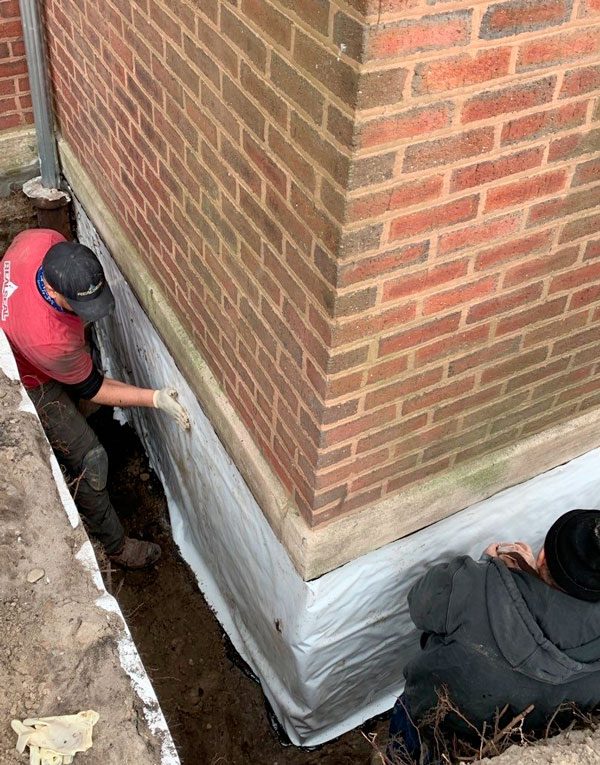
When it comes to protecting your home, one of the most critical yet often overlooked defenses is the foundation waterproofing membrane. Designed to keep your sanctuary safe and dry, a waterproofing membrane offers a robust layer of protection that can save homeowners from foundation issues requiring costly repairs. Whether you’re in the process of building a new house, renovating an old one, or simply looking to bolster your home’s defenses against the elements, understanding what a foundation waterproofing membrane is and how it functions could be the difference between a secure homestead and one fraught with dampness and decay. In this blog post, we’ll review types of waterproofing membranes, when they’re applied, why you might need a waterproofing membrane, and more.
What Is a Foundation Waterproofing Membrane?
A foundation waterproofing membrane is a protective barrier installed around the exterior of a building’s foundation. Its primary purpose is to prevent water and moisture from penetrating the foundation walls, which can cause structural damage and mold. These membranes are typically made from rubber, plastic, or a coated-fabric material, designed to be durable and resistant to the external pressures of soil and water. By providing a waterproof layer at the foundation level, these membranes help to maintain the integrity and dryness of a basement or crawl space.
When Is A Waterproofing Membrane Applied?
An exterior foundation waterproofing membrane is applied to the exterior of the basement walls during the home’s initial construction. Exterior waterproofing membranes can also be applied after occupancy, but it would require excavating the ground around the foundation and cleaning the walls to ensure a proper seal.
Types of Waterproofing Membranes
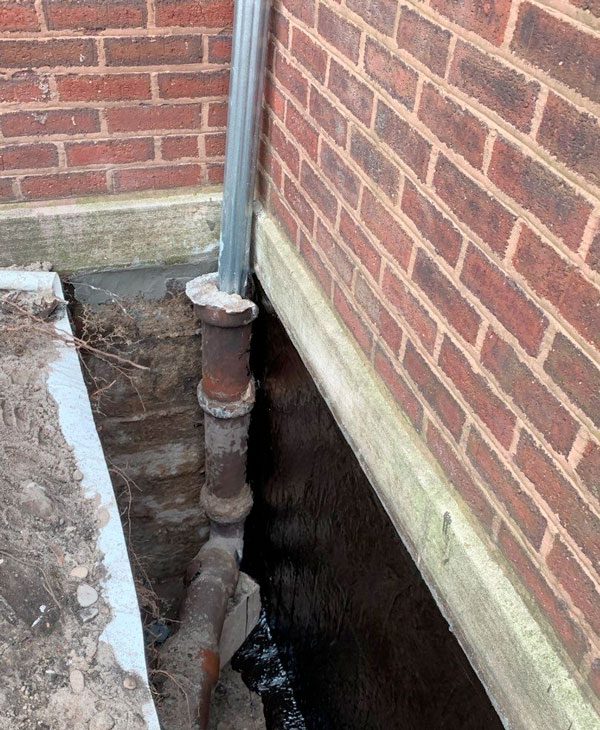
Spray Membranes
A spray gun is used to apply this membrane type. The material dries on the wall to create a waterproof seal. A spray membrane is typically used on an irregular surface. It may also be considered for larger projects.
Sheet Membranes
Large sheets of plastic or rubberized asphalt can be applied to the exterior of the foundation walls to seal the foundation.
Liquid Membranes
A liquid membrane is typically used along with sheet membranes in areas where a seal is difficult to achieve. Those areas would include around pipes and windows.
Why Is A Foundation Waterproofing Membrane Needed?
Applying a foundation waterproofing membrane is the first line of defense against water damage. It keeps water from penetrating the foundation wall and further protects the wall by keeping the surrounding soil from coming in direct contact with the foundation walls. There are several benefits associated with using a waterproofing membrane, including the following:
- Protect the Foundation – Water can cause a significant amount of damage to the foundation and your home. The membrane and a drain tile system can help keep water from building up around the foundation and causing damage to the walls.
- Protects From Interior Water Damage – Any leaks in the foundation walls can allow water to enter the basement and damage anything inside. Whether you use the basement for extra living space or storage, water damage is a costly problem.
- Helps You Breathe Healthier Air – Keeping the basement dry reduces the possibility of mold and mildew growth. It is estimated that approximately 50% of the air you breathe in the home originates in the basement. Stopping mold and mildew growth safeguards your health and that of your family.
- Increases Property Value – A leak-free basement will be an excellent selling point if your home is on the market. A dry basement is additional usable space.
Additional Things You Can Do to Help Keep Your Basement Dry
Applying a foundation waterproofing membrane is an excellent first line of defense to protect your home from damage. However, there are other things you can do to help keep your basement dry. These include the following:
- Drainage System – A drain tile system can be installed under the basement slab to direct water to a sump pit. Once the pit fills with water, a sump pump will turn on and release the water away from the foundation.
- Foundation Crack Repair – Cracks in the foundation walls can be fixed with carbon fiber straps and epoxy injections.
- Downspout Extensions – These extensions direct roof runoff from the gutter and downspout to an area away from the home to prevent the buildup of moisture near the foundation.
- Exterior Grading – Proper property grading ensures water naturally flows away from the home.
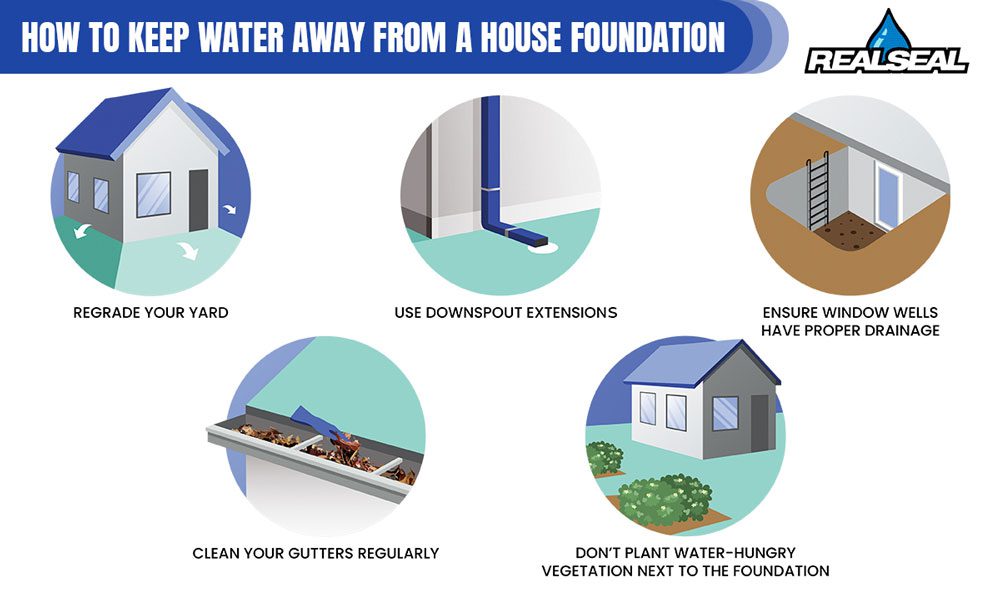
Signs Your Foundation Is In Trouble
The following are possible signs that foundation problems are taking place. If you see these issues, you can contact The Real Seal for a foundation inspection and to discuss your options, including applying a waterproofing membrane.
- Structural Cracks – Not all cracks in the foundation walls are of serious concern, but they must be addressed if they are structural cracks. Structural cracks include horizontal, diagonal, or stair-step cracks.
- Sticking Windows and Doors – If the foundation is shifting and sinking, it will put a lot of pressure on the home’s frame. This could result in the door and window frames getting distorted, and the windows and doors would stick when you open and close them.
- Uneven Floors – As the home settles, it could cause the floors to become uneven. Sloping floors are not always easy to detect, but many homeowners with the problem report feeling dizzy or as if they are falling when walking across the room.
- Leaning Chimney – The chimney may begin to tilt or could separate from the home when foundation problems occur.
- Separating Walls and Floors – The walls and floors may separate due to the pressure on the home’s frame.
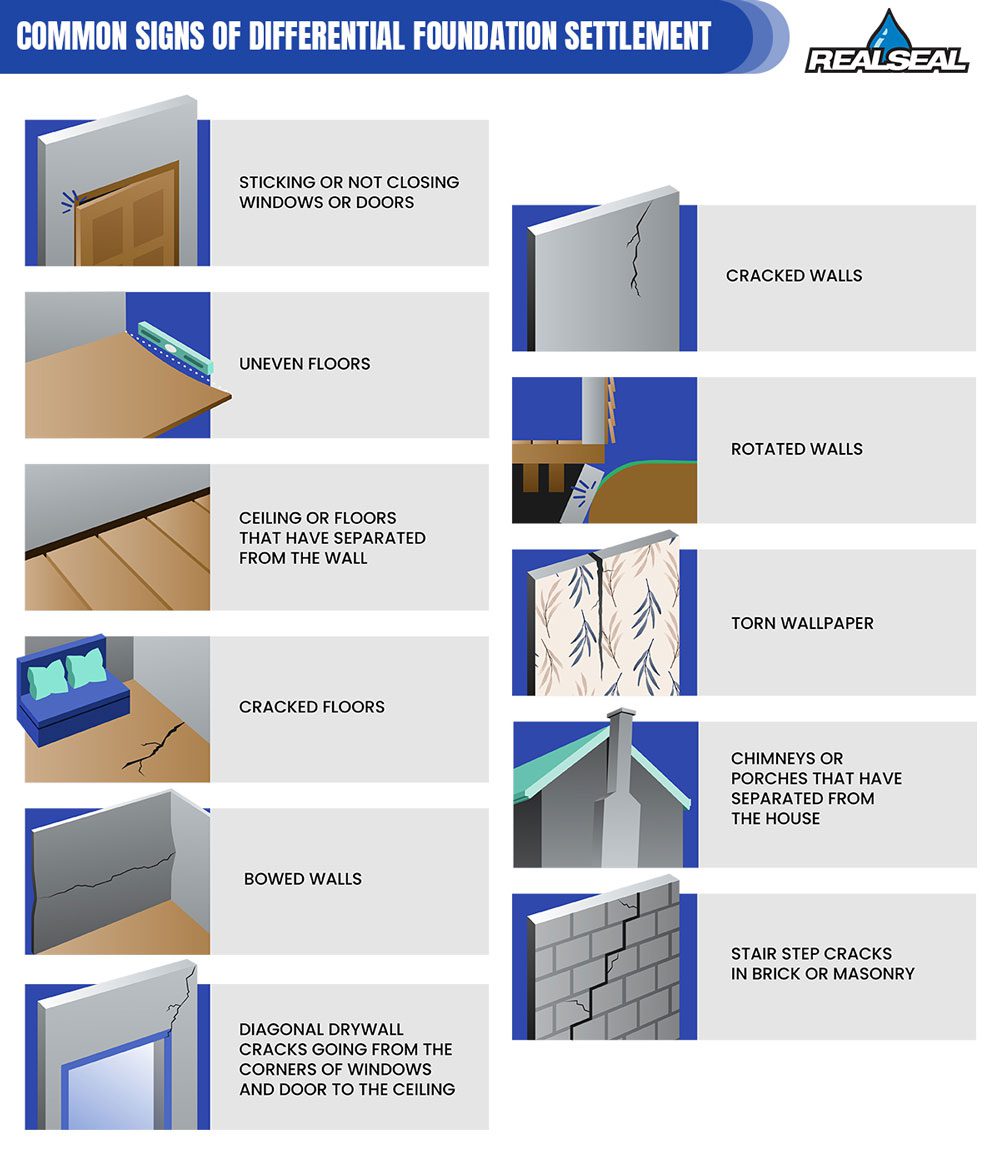
Any home would benefit from basement waterproofing and a foundation waterproofing membrane. Contact The Real Seal today to discuss your needs and for an estimate of what should be done to keep your home safe and dry.
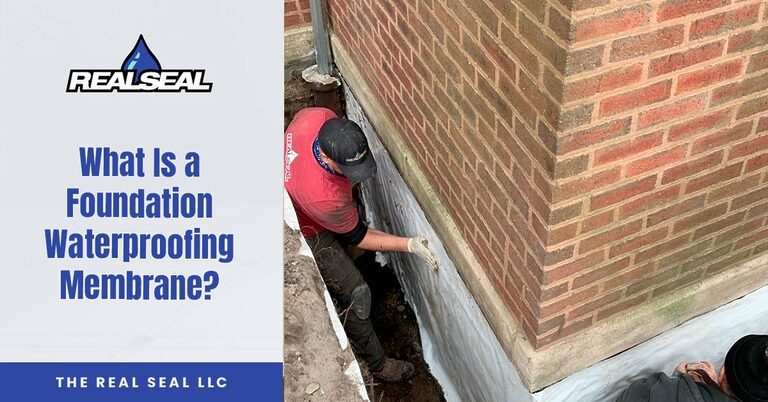
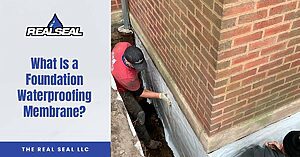





3 Responses
I removed all floorboards and found all 3 wall of my house daumping issue the house is 2 bed with ground floor area 35 square metres is end off terrace after removed the floorboards I realised the foundation in side of the house completely is daump even the kichen area I don’t know if you can help me with this issue many thanks
To contact me 07894326646
Hi Eamon,
Unfortunately, we are based in Chicagoland and wouldn’t be able to help you in the UK. It would be best to find a qualified contractor in your area to come check out that issue.